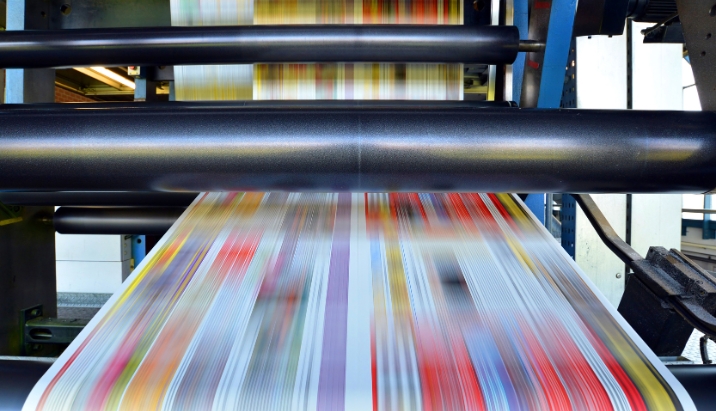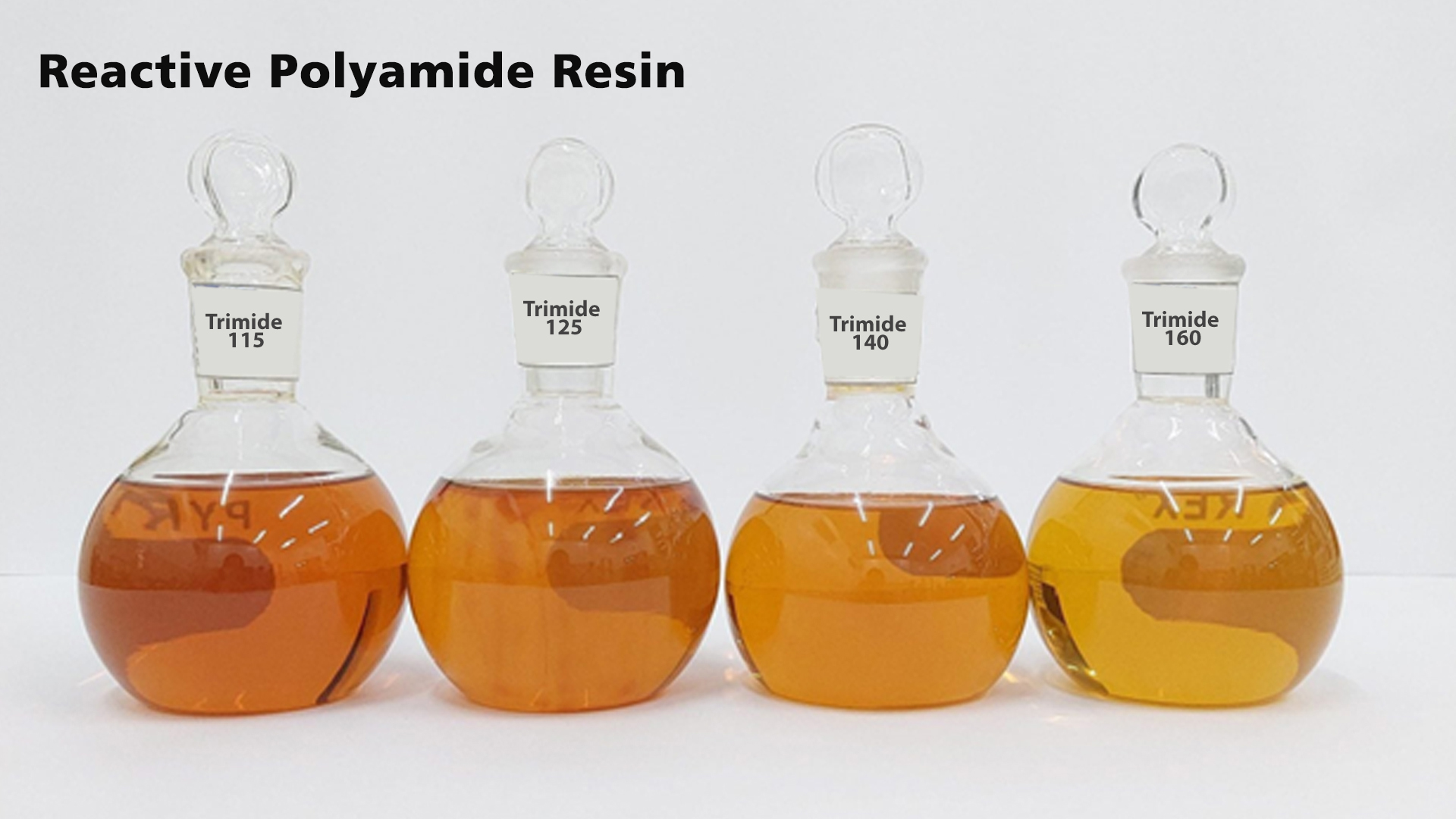
The printing industry continually faces the challenge of producing high-quality prints on difficult surfaces, such as untreated high-density polyethylene (HDPE), polypropylene (PP) and polyethylene (PE). These materials, often non-porous, make it hard for inks to adhere properly, leading to poor print quality, peeling and reduced durability. Polyamide resins, however, have emerged as a game-changer in the industry, enhancing ink adhesion, drying times and resistance to environmental factors.
This article explores how polyamide resins are critical for formulating specialized inks, particularly in flexographic (flexo) and gravure printing and how they help achieve reliable results on challenging surfaces.
The Importance of Polyamide Resins in Printing
Industrial Polyamide resin are synthetic polymers known for its excellent adhesion properties, resistance to heat and overall durability. These resins play a vital role in the Polyamide resin formulation of printing inks, especially for flexographic and gravure printing, which require inks that can adhere to non-porous, challenging surfaces.
Polyamide resins are added to printing inks to improve their performance, including adhesion to difficult substrates, drying speed and overall ink durability. Their chemical structure and ability to interact with various surfaces make them ideal for use in a wide range of printing applications, from food packaging to automotive labels.
Challenges in Printing Industry on Non-Porous Surfaces
Printing on challenging substrates like untreated HDPE, PP and PE is a common challenge in the printing industry. These materials have low surface energy, meaning that traditional inks have trouble sticking to them. Without the right resin, the ink may peel off, smudge or fail to cure properly. Some of the common challenges include:
- Adhesion Issues: Non-porous surfaces don’t allow ink to soak in, leading to poor adhesion and a high risk of print failure.
- Slow Drying: Many inks take longer to dry on non-porous surfaces, resulting in smudging and inconsistency.
- Durability Concerns: Prints on these surfaces are often more susceptible to wear, moisture and chemicals, especially when exposed to harsh environments or frequent handling.
How Polyamide Resins for Printing Solve These Challenges?
Polyamide resins are particularly useful in overcoming the challenges of printing on difficult surfaces. Here’s how polyamide resins address these issues and enhance ink performance:
1. High-Performance Polyamide Resin Improves Adhesion on Non-Porous Surfaces
One of the most significant challenges in printing on non-porous materials is achieving a strong bond between the ink and the surface. Polyamide resins enhance ink adhesion by interacting with the substrate and forming a stronger bond. They reduce the likelihood of peeling or flaking, even in tough conditions.
- Enhanced Bonding: The resin’s chemical structure helps it adhere strongly to the surface, improving print quality and durability.
- Versatility Across Substrates: Polyamide resins work well on a variety of non-porous substrates, including plastics like HDPE, PP and PE, which are notoriously difficult to print on.
2. Polyamide Resin Offers Faster Drying and Curing
Inks formulated with polyamide resins have faster drying times, an essential feature when printing on non-porous surfaces. Quick drying reduces the risk of smudging and helps speed up the production process.
- Efficient Drying: The resins improve the ink’s drying speed, making them ideal for high-speed printing operations.
- Prevention of Smudging: With faster drying, the risk of smudging or damaging the printed image during handling is minimized.

3. Polyamide Resin Manufacturer Increases Durability and Resistance
Polyamide resins significantly improve the resistance of printing inks to environmental factors such as abrasion, moisture, UV exposure and chemicals. This is crucial for applications where the printed material will face harsh conditions, such as labels on bottles, packaging for frozen foods or automotive markings.
- Abrasion Resistance: Inks with polyamide resin are more resistant to wear and tear, ensuring that the print remains intact even after repeated handling or friction.
- Chemical and Moisture Resistance: Polyamide resins enhance the ink’s resistance to chemicals, oils and moisture, making them suitable for a wide range of applications, including packaging for food or consumer goods that need to endure exposure to environmental elements.
4. Specialized Inks for Freeze-Thaw and Deep-Freeze Applications
In specific industries, especially those related to food packaging or pharmaceuticals, printing on materials exposed to extreme temperature conditions – such as deep-freezing – requires specialized inks. Polyamide resins are effective in formulating inks for freeze-thaw and deep-freeze applications, where regular inks might fail due to temperature shifts.
- Deep-Freezing and Freeze-Thaw Resistance: Polyamide resins help inks maintain their adhesion and durability even when exposed to extreme temperature changes, which is critical for packaging used in cold storage environments.
5. Versatility for Flexo and Gravure Printing
Polyamide resin for printing inks are widely used in both flexographic and gravure printing, two of the most popular printing techniques for packaging, labels and other products. Each method requires specific ink properties and polyamide resins contribute to the formulation of inks that perform well in both.
- Flexo Printing: In flexographic printing, which is used for flexible packaging, polyamide resins help improve ink adhesion to substrates such as plastic films and papers, providing high-quality prints with excellent clarity.
- Gravure Printing: In gravure printing, typically used for high-volume printing such as magazines or wallpaper, polyamide resins help ensure consistent ink flow and smooth application across challenging surfaces, ensuring crisp, clear images.

Conclusion
Polyamide resins play an essential role in the printing industry, particularly when printing on challenging surfaces like untreated HDPE, PP and PE. Its ability to enhance adhesion, improve drying times and increase durability makes them indispensable for creating high-quality, long-lasting prints. As the demand for specialized printing on non-porous surfaces continues to grow, polyamide resins will remain a key component in achieving consistent, reliable results in flexo and gravure printing.
By choosing the right polyamide resin for the application, printers can ensure that their inks perform optimally, whether for deep-freeze applications or high-speed flexographic printing. Polyamide Resins Suppliers provide the versatility, strength and durability required for printing on even the most challenging surfaces, helping the printing industry maintain high standards of performance.
- Tridev Resins: Delivering High-Performance Synthetic Resins for Diverse Industrial Applications
- How Different Solid Content Levels in Water-Based Acrylic Emulsion Affect Performance?
- Polyamide Resins in the Printing Industry: Enhancing Performance for Specialized Inks on Challenging Surfaces
- Why Methylol Content Matters in Alkyl Phenolic Resins for Automotive and Leather Adhesives?
- How Rosin Modified Phenolic Resins Contribute to Long-lasting and Stable Printing Ink Formulations?



